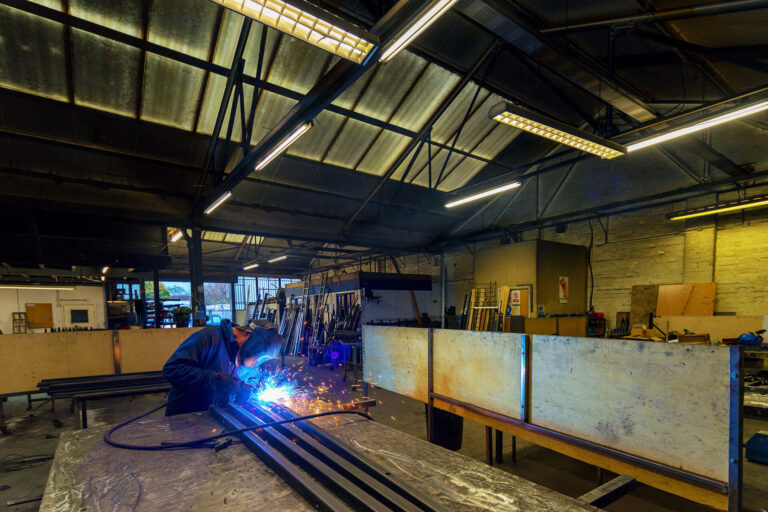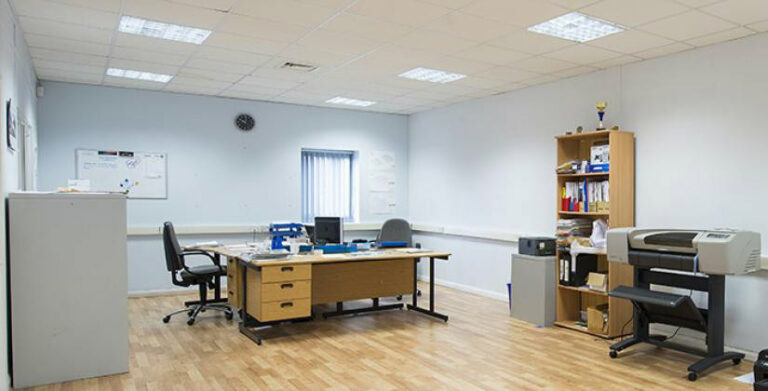Radio advertising offers your business the chance to reach the right audience, boost brand awareness, and stimulate sales. With 89% of us tuning in every week, this type of advertisement lets you spread your message to huge numbers of listeners. Equally, radio ads allow for intelligent targeting of specific locations and demographics through your choice of station.
If you’re considering radio advertisements for your company, this guide explains everything you need to know to make an informed decision. Join us as we look at what radio advertising is, the different types, its effectiveness, the costs associated with radio ads, and factors to consider when planning your slots.

What is radio advertising?
Radio advertising is the use of a radio station to promote your goods or services. The less expensive and more targeted cousin of TV ads, this traditional type of marketing communication is well suited to companies looking to reach consumers with particular interests (e.g. fans of certain musical genres or sports) or regional markets through local radio advertising.
The advertising process on the radio typically involves an organisation booking ad slots: the advertiser pays the radio station for predefined amounts of airtime, during which the station will broadcast the desired message to its listeners. We’ll explore the cost of these radio ad slots and factors to consider when booking them below.
Different types of radio advertisement
Just as a business could promote itself online via YouTube video ads or sponsored social media posts, there are tonnes of different radio advertisement types to choose from. You should consider which format to adopt carefully with your advertising campaign’s target audience and objectives in mind. To help you with this, we’ve included a rundown of the main options.
Radio jingles
When you think of Go Compare, the odds are that the comparison site’s catchy operatic jingle comes straight to the forefront of your mind. Jingles are the easiest to recall of all radio ad formats, capitalising on the link between music and memory. These sound bites become embedded in the collective consciousness of consumers. A snappy jingle can be a great way to stimulate sales through short radio ad segments once you’ve built up enough brand awareness.
Straight reads
Similar to a jingle, a straight read is another type of ‘produced spot’ where the advertiser creates the message for broadcast. This is the most common type of advertisement that you’ll hear on the radio, involving one or more voices reading out a message that emphasises the benefits of the brand, product, or service.
Straight reads tend to feature some form of contact information like a website or phone number as well as a call to action that encourages the listener to get in touch or make a purchase. These radio advertisements are not only effective at driving sales but also generating awareness of your brand in the first place – for this reason, radio ads will often combine a straight read with a jingle to influence consumers who are at different stages of their relationship with the brand.
Sponsorships
The key to excellent response rates in radio advertising is repetition. Sponsorships allow your business to reach potential customers again and again in a subtle way that integrates into the radio show’s natural flow. By sponsoring a segment such as the news or a competition, you can catch listeners when they’re at their most engaged. Your brand becomes a part of the show in this way, slowly encouraging its fans to seek out your products or services over time. There are generally more opportunities for sponsorships with niche or local radio advertising.
Live reads
A live read involves the radio show host reading out your advertisement on your behalf. Like sponsorships, this format ensures that your ad and your brand are assimilated into the radio channel itself, helping you to reach dedicated enthusiasts and niche consumer segments who follow a certain show. Live reads are also more persuasive: we tend to listen more to what others have to say about a brand than the company itself, particularly if they’re an influential figure like a radio DJ.

Why advertise on the radio?
With contemporary advertising channels like social media becoming increasingly popular, more traditional methods are often overlooked, and radio ad spend is dropping off. Despite this trend, there are plenty of reasons to consider advertising on the radio as part of your marketing strategy.
The advantages of radio advertising
Radio advertising offers a number of important benefits to your business:
- Advertising through specific radio channels allows you to hone in on particular demographics and regional markets (broadcasters can provide data on their audiences to help inform your decision).
- By broadcasting your ads at selected times of day, you can get through to listeners who align with your target segments.
- Radio advertisements have huge reach, ensuring that your brand is heard by large numbers of listeners while keeping costs down in comparison to TV ads; both production costs and advertising fees are considerably lower with radio ads than TV.
- The daily repetition and high overall frequency of radio ads ensure that they’re memorable, keeping your brand at the top of consumers’ minds.
- We see our favourite radio stations as trustworthy companions that we listen to every day whilst driving, working, and relaxing – tapping into this environment offers real value to brands, with the ability to influence consumer purchase behaviour on a subliminal level.

Does radio advertising work?
Of course, if you’re considering a foray into radio advertising, then there’s one main question on your mind: does it work?
As the evidence shows, radio ads still have the power to build brand awareness and promote sales. Independent research found that a combination of two radio slots and one TV ad was 20% more cost-effective than two TV ads. Consumers were 6% more likely to consider a brand with the first stimuli compared to TV advertising alone – and the advertising cost was 15% less.
It’s clear that radio advertising works well in tandem with other media, but other studies have found that this type of marketing increases sales even when considered in isolation. A recent Radio Advertising Bureau (RAB) study discovered that radio spots generated a 22% increase in retail store footfall on average, with automotive and beauty retailers seeing a 32% uplift.
How much does it cost to advertise on the radio?
Advertising on the radio is an effective means of achieving your marketing goals, but how much does a radio ad slot cost? A typical radio station has an advertising inventory of around 18 minutes per hour available for advertisers to buy in slots of 15, 30, and 60 seconds. The price of these segments varies at different times of day in line with the number of listeners at any one point in time. We’ll delve deeper into radio ad cost considerations below.
Factors influencing radio advertising costs
There are several factors to consider when working out radio advertising costs:
- Timing – the length of an ad slot and the time of day will affect its cost (a 15-second segment at peak times could cost more than a 60-second slot late at night).
- Frequency – as you’d expect, each slot is priced individually, so the more adverts you broadcast, the greater your radio ad spend; some radio stations may offer your bulk discounts if you negotiate.
- The radio station’s listenership – generally speaking, the greater the radio show’s audience, the more expensive its ad slots will be. Check out the Radio Joint Audience Research (RAJAR) site for listening figures.
- Cost of production – on top of the fee charged by the station, you need to factor in all of the costs you’ll incur in creating a produced spot, such as casting and recording studio hire.
Calculating a rough estimate of radio ad fees
You can work out roughly how much radio advertising should come to if you know the average size of a station’s audience at a given point in time. As a rule of thumb, a standard 30-second radio ad slot is charged at about £2 for every thousand listeners who are tuned in when it airs.
For example, a 30-second segment at 8:30 am on a station with 100,000 listeners at this time would cost roughly £200. The same radio ad slot at 7:00 pm when only 50,000 people are tuned in would be charged at about £100.
You can expect some discrepancies based on the radio station’s overall listenership – and it’s worth negotiating on price.
Things to consider when buying radio ads
Now you have a sense of how radio slot costing is worked out, it’s time to think about the key decisions you’ll have to make when booking them in. There are plenty of points to mull over here. Taking the time to plan out your strategy will ensure that your radio advertising is as effective as possible.
Audience type and target segments
First and foremost, who do you want to reach with your radio ads? You need to research the demographics of the channels you’re considering and select your radio stations carefully depending on your organisation’s target segments. For example, data on the listenerships of UK radio stations suggests that a brand looking to target millennials would fare better advertising on Capital FM than with Classic FM, the core audience of which is over 50 years old.
With this in mind, it’s important to think about how your ads’ timing fits in with your target consumer. Late morning radio ads are unlikely to get through to professionals in the 30-49 age bracket but could prove highly successful if your brand targets the student population.
Reach and frequency: “three frequency” and the 21/52 schedule
With radio advertising, there’s always a trade-off between reach and frequency. Reach is the number of people who will hear a given radio ad; frequency refers to the number of times a week your advert will be played on a given station.
A term called the “three frequency” is used in the industry. Radio advertising relies on repetition to ensure that consumers remember the message, and research has shown that we need to be exposed to a radio ad three times a week for optimal effectiveness. To achieve this for the average listener of a radio show, your ad needs to be played 21 times a week, 52 weeks of the year (hence the phrase ‘21/52 schedule’). The exact figure will vary from station to station depending on listenership, but their advertising teams will help you work this out.
Scheduling formats
You may not have the budget to run 21 ads per week all year round across your chosen radio stations. With this in mind, there are several different scheduling formats to consider when planning out your radio ads:
- Branding schedule – sometimes referred to as “flights”, this common type of schedule involves your ads being broadcast in the same spot each day for a set period of time (often four to eight weeks), then switched to another spot for the next flight of ads. A branding schedule gives you the best chance of reaching the same listeners repeatedly, so it can be a great strategy to adopt.
- Run of station – a run of station (ROS) schedule sees you hand over the reins entirely to the radio station. You pay for a pre-determined number of slots, and they decide which days and time slots to play your ads on. Radio stations will often give the best rates to advertisers that adopt a ROS schedule, although you lose all control over your ads’ timing and targeting.
- Nominated day – if your budget is limited or you’re looking to trial radio advertising for the first time, then a nominated day schedule could be right for your business. As the name suggests, the advertiser picks one day of the week to run its radio ads at intervals throughout the day. A nominated day schedule helps to keep costs down at the expense of regular repetition, which could mean that your ads aren’t committed to memory.
Ultimately, the scheduling format is a decision that must be reached between you and the radio station – as well as budget constraints, you may find that the availability of ad slots on your chosen stations prevents you from adopting your ideal schedule.
This guide has explored everything you need to help you decide whether radio advertising is right for your business, from the types of ads you could run to the practical considerations like costs and scheduling formats.
BizSpace is the UK’s leading supplier of regional flexible workspace. Get in touch today to find out how we could help your business or use our office search tool to find available premises near you.
Author:
BizSpace
BizSpace is the UK’s leading provider of regional flexible workspace. For over 20 years we have been offering office, studio and workshop units to a wide range of businesses in convenient regional locations across the country. We are owned by Sirius Real Estate, a commercial property operator, that is supporting us on a journey to significant growth.
More BizSpace News

Blog
Finding a Small Industrial Unit or Workshop to Rent
Let’s be honest with each other, finding a ‘perfectly sized’ industrial unit for your business isn’t exactly fun. It’s time-consuming,…
Find out more
Blog
Designing your ideal office: 8 top tips
Focus on comfort and practicality when designing your office space, considering layout, light, furniture, clutter and accessories.
Find out more
Blog
What is a Satellite Office?
Businesses are now finally able to return to some sense of normality in our post-COVID society. There has been plenty…
Find out more